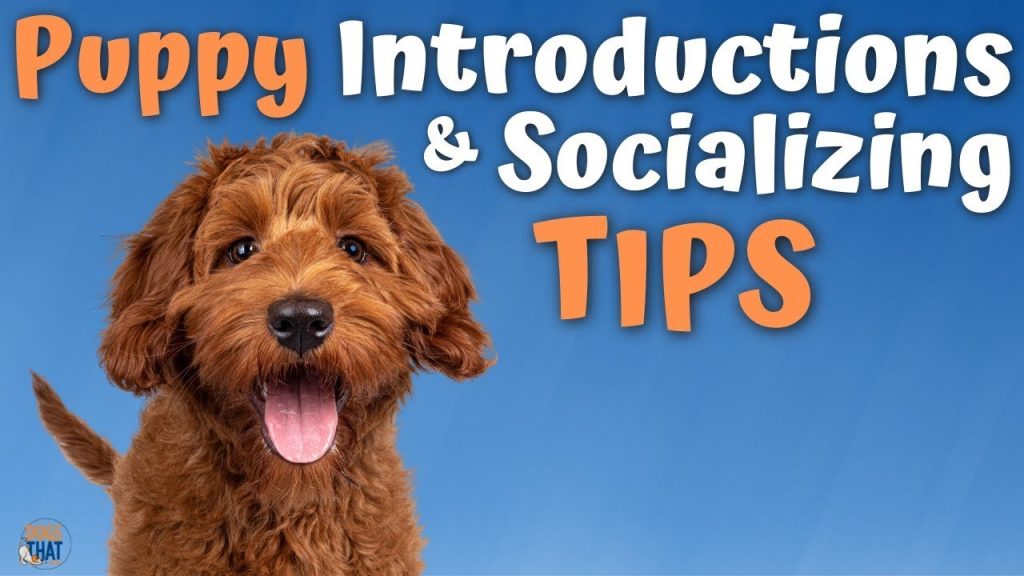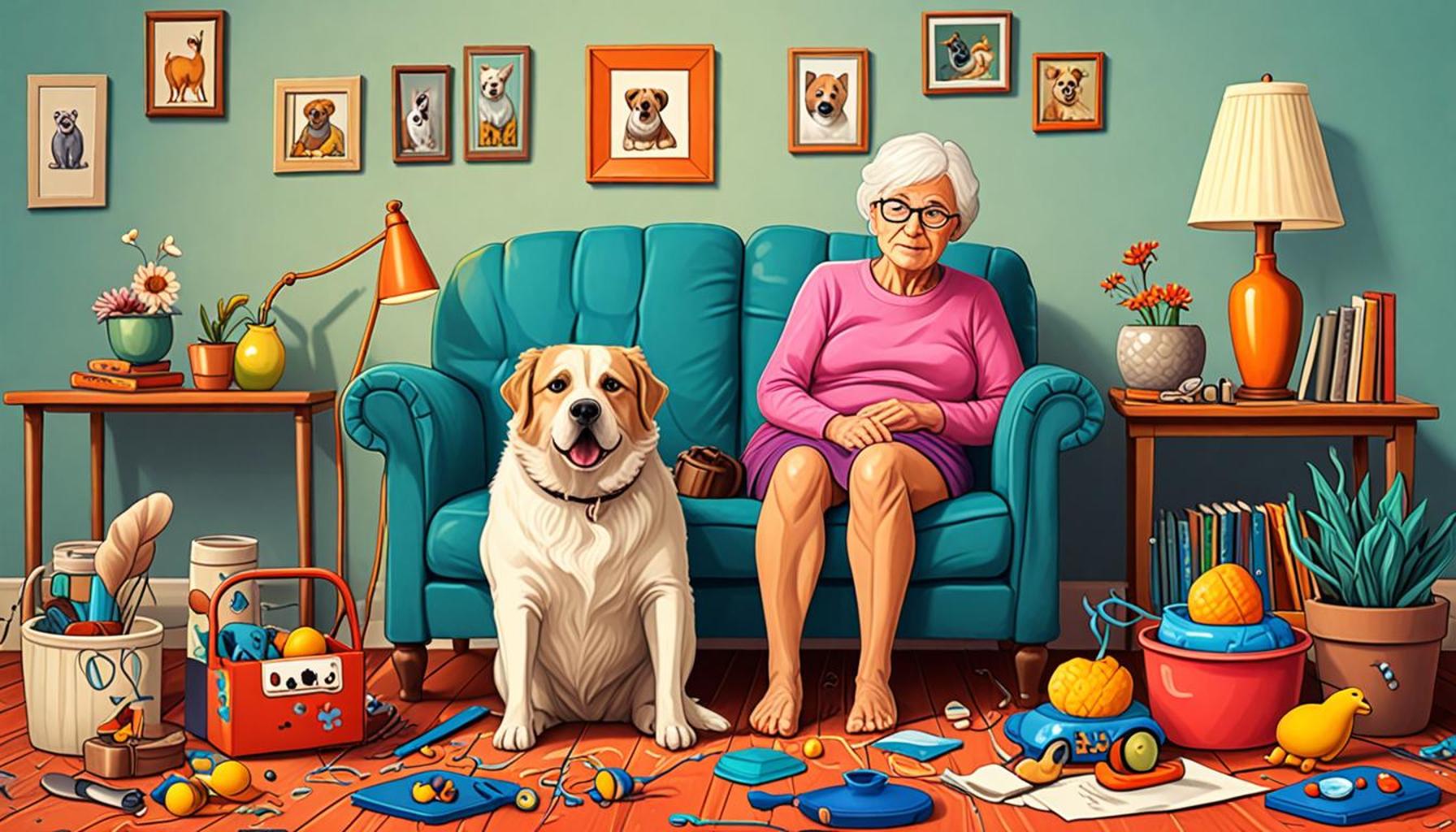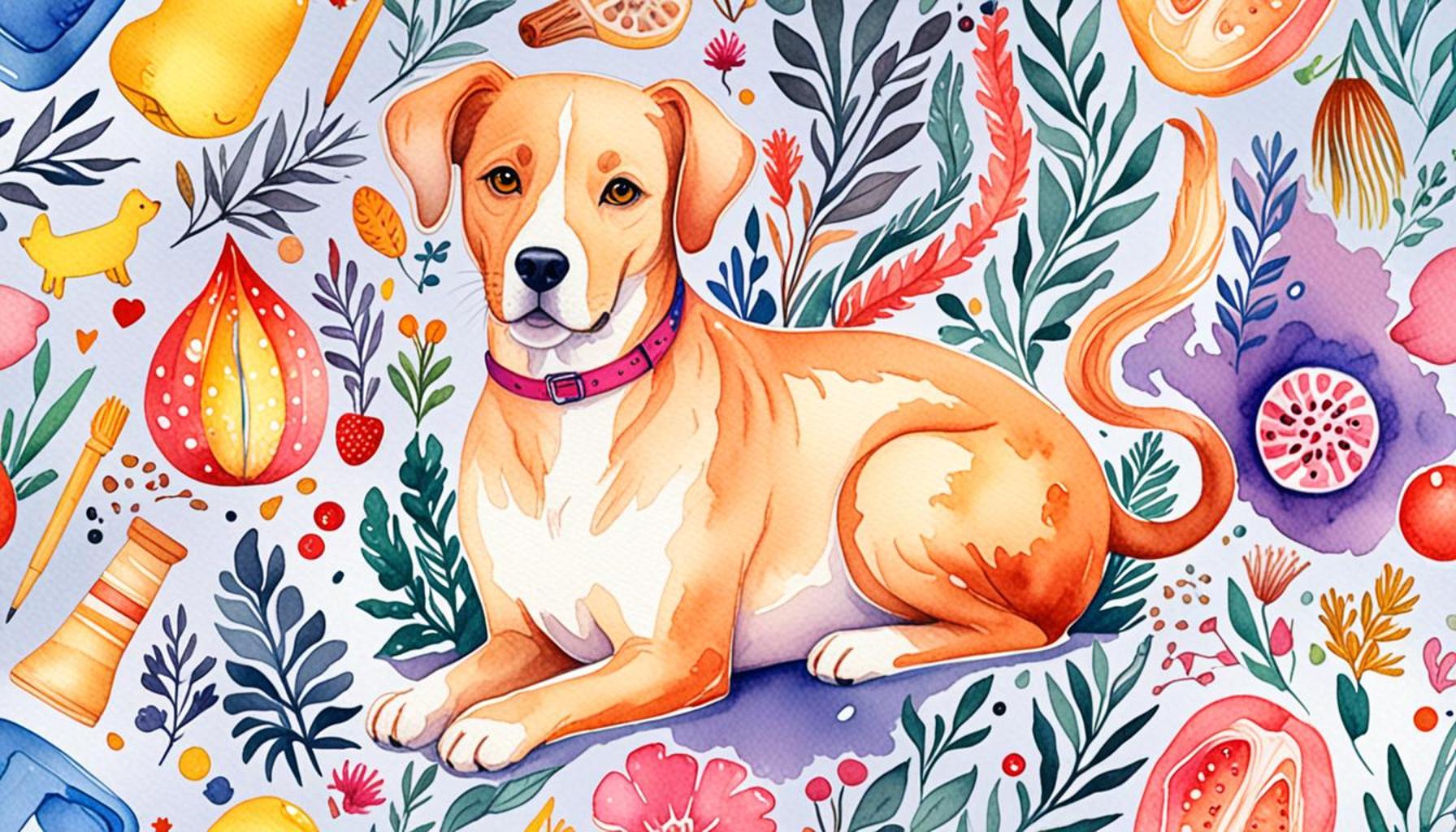Puppy Socialization Strategies Building a Confident Canine Friend

Understanding Puppy Socialization
Welcoming a puppy into your home is an exhilarating experience, but it comes with the responsibility of ensuring they grow into a well-adjusted adult dog. Puppy socialization is crucial for developing a confident canine that can adapt to various environments and interact positively with other animals and people. This process lays the foundation for your puppy’s future behavior and overall happiness.
The Importance of Early Socialization
During the critical early months, a puppy’s brain is remarkably receptive to new experiences. Socialization involves exposing your puppy to different sights, sounds, and smells, which helps to:
- Reduce fear and anxiety in unfamiliar situations
- Encourage positive interactions with other pets and humans
- Prevent behavioral issues like aggression or excessive shyness
In this article, we will explore the Top 5 Strategies for Socializing Puppies effectively. Each strategy is designed to enhance your dog’s confidence and prepare them for a fulfilling life as a beloved companion.
DISCOVER MORE: Click here for helpful tips
Top 5 Strategies for Socializing Puppies: Building a Confident Canine Friend
Socializing your puppy is one of the most critical aspects of raising a well-adjusted and confident dog. Whether you’re a seasoned dog owner or a first-time pet parent, understanding the nuances of puppy socialization is crucial. Incorporating effective socialization strategies can not only prevent behavioral issues in the future but can also help your furry friend develop strong bonds with both people and other animals. Here, we present the top five strategies to effectively socialize your puppy and support the growth of a healthy friendship.

5. Controlled Exposure to New Environments
One of the essential strategies for socializing puppies is introducing them to a variety of new environments. This exposure should be carefully controlled to ensure that your puppy feels safe and secure. Puppies, like humans, are naturally curious about the world around them, and this curiosity can lead to both positive and negative experiences.
- Parks: Visiting different parks can expose your puppy to various sights, sounds, and smells. The rustling of leaves, the sound of children playing, or the sight of other animals are perfect stimuli for your puppy’s senses.
- Pet Stores: A trip to a pet store is a fantastic way for puppies to meet new people and pets in a controlled setting. These environments are typically safe and allow for interactions with a variety of people and other well-behaved animals.
- Neighborhood Walks: Regular walks around the block help your puppy adapt to the everyday environment they will encounter. Such walks provide a controlled exposure to new stimuli, such as cyclists, joggers, and different road surfaces.
These outings should be short and positive, gradually increasing in exposure as your puppy becomes more confident. Remember to watch for signs of anxiety, such as excessive panting, whining, or tail-tucking, and be ready to intervene if needed to keep your puppy’s experience positive. Using treats or verbal reassurances when your puppy encounters something new can also bolster their confidence and create positive associations.
4. Puppy Playdates
Puppy playdates are another excellent way to socialize your pet. The importance of this strategy cannot be overstated as play is the natural way for puppies to explore the boundaries of social behavior. Interacting with other puppies allows them to learn essential social cues, such as how to approach others, understanding body language, and respecting boundaries—all crucial for harmonious living in a social world.
It’s crucial to select the right playmates—ensure that the other puppies are friendly and that their vaccinations are up to date. The safety and health of all puppies involved should be prioritized to prevent the spread of diseases and ensure positive experiences.
During playdates, supervise interactions closely and guide the play to ensure they are engaging positively. Pay attention to signs that play is becoming too rough, like loud growling or one dog constantly pinning the other down. Positive reinforcement, such as treats and praise, can be applied to encourage healthy interactions, reinforcing the puppy’s enjoyment of socializing while building confidence. Socializing should always be associated with fun and positive experiences for the best outcomes.
3. Positive Reinforcement Training
Positive reinforcement is an effective training method based on rewarding desired behaviors, which can significantly boost a puppy’s confidence and willingness to engage. Training your puppy using positive reinforcement techniques, such as offering treats, verbal praise, or play, helps reduce fear and anxiety associated with new experiences.
Focus on basic commands like sit, stay, and come in varied environments. This approach not only teaches obedience but also provides a framework for how puppies should interact with the world. Each time a puppy successfully performs a command, offering a treat or affectionate petting reinforces their behavior.
With consistent practice, puppies learn that their humans are a constant source of safety and reward. This method strengthens your bond and increases their willingness to explore new situations. Incorporate training during social outings, rewarding them for calm behavior around new people and environments, which is crucial for growing their courage and adaptability.
2. Puppy Classes
Enrolling your puppy in a formal puppy training class provides a structured environment for socialization. These classes allow your dog to meet other puppies under professional supervision, teaching them essential behaviors in a safe way. While some might think puppy classes are only for learning basic commands, they offer so much more in terms of exposure to new environments and social settings.
Classes often focus on socialization skills, communication, and appropriate play behavior. Trainers experienced in puppy behavior can offer valuable guidance specific to your puppy’s needs. If a particular behavior or fear develops, trainers can provide strategies to counteract these issues, often drawing on their extensive knowledge of canine behavior.
Participating in regular classes sets the stage for future good behavior and builds a strong foundation for a trusting relationship. Puppies learn to be comfortable amidst others, which will be crucial as they face new experiences throughout their lives.
1. Early and Consistent Socialization
The number one strategy for socializing puppies is to begin early and maintain consistency. Introducing your puppy to new experiences, people, and other animals should start as soon as they are fully vaccinated, typically around 12-16 weeks of age. This period, often referred to as the critical socialization window, is a time when puppies are most receptive to new experiences without fear.
Consistency is key—continuously expose your puppy to varied experiences throughout their critical development period, which lasts until they are about six months old. Early and frequent socialization reduces the likelihood of developing fear-based behaviors and phobias later in life. Puppies that are not properly socialized during this window may grow up to be fearful adults, which can lead to behavioral issues like aggression or excessive anxiety.
Moreover, it’s not just about frequency; the quality of interactions matters, too. Ensure each experience is positive, starting from calm environments with friendly individuals. Always remember to approach each situation with patience and reward good behavior. As your puppy successfully navigates these experiences, they’re learning important life skills that will contribute to a well-adjusted adult dog.
In conclusion, the journey to socializing your puppy into a confident canine friend involves careful planning, positive reinforcement, and consistency. Implementing these five strategies will undoubtedly strengthen your bond while setting your puppy up for a lifetime of confident interactions. Each strategy contributes to developing a pooch that is not only socially adept but also a joyful part of your family and community. By investing time and effort in the early stages, you’re ensuring your furry companion can navigate the world with ease and happiness.
| Training Techniques | Key Features |
|---|---|
| Positive Reinforcement | This technique involves rewarding desirable behaviors. Dogs learn to associate actions with positive outcomes, leading to increased confidence and eagerness to engage with their environment. |
| Desensitization | Introducing puppies to various stimuli in a controlled manner helps them become accustomed to new experiences. This method is vital in eliminating fear responses, promoting adaptive behavior. |
| Socialization Activities | Benefits |
|---|---|
| Playdates with Other Dogs | Social interactions with other dogs facilitate learning important social cues. Puppies gain skills in communication and develop friendlier behaviors, creating well-adjusted adults. |
| Puppy Classes | Formal training classes offer supervised environments where puppies can meet others. This structured interaction fosters confidence-building and enhances bonding between the owner and their pet. |
| Physical Environment | Contributions |
|---|---|
| Safe Exploration Areas | Creating a secure space where puppies can explore freely promotes curiosity. A stable environment cultivates trust, ultimately leading to confidence. |
| Exposure to Diverse Settings | Taking puppies to parks, pet-friendly stores, and various locations helps them adapt to diverse situations. This flexibility encourages a better adaptation to new experiences, reducing anxiety in the long run. |
DON’T MISS OUT: Click here to prepare your home for your new puppy
Frequently Asked Questions (FAQs) on Socializing Puppies
How soon should I start socializing my puppy?
It is crucial to begin socializing your puppy early, typically when they are between 3 to 14 weeks old. This period is known as the ‘socialization window’, and puppies are more receptive to new experiences and stimuli during this time. Introducing them to different environments, people, and other animals can greatly influence their future behavior, making them more adaptable and less fearful.
What are the best environments for socializing my puppy?
Exposure to various environments is key. Start with controlled settings like your home or a friend’s house, and gradually introduce them to new places such as parks and pet-friendly stores. Always ensure these places are safe and stress-free to prevent overwhelming your puppy. The goal is to provide positive experiences through controlled exposure.
How can I tell if my puppy is overwhelmed during socialization?
Puppies express stress in several ways. Signs of being overwhelmed include excessive panting, whining, or trembling. Watch for signs of avoidance, like cowering or hiding. If any of these are observed, it’s important to remove them from the situation and try again later. Always proceed at a pace your puppy is comfortable with.
Is socialization limited to just exposure to other dogs?
Socialization extends beyond introducing your puppy to other dogs. It includes meeting different people, hearing various sounds like traffic or household appliances, and encountering different textures and surfaces. This comprehensive approach enables puppies to become well-rounded and confident in numerous situations.
What if my puppy shows fear during socialization sessions?
Fear is not uncommon, but it’s important to handle it with care. Reassure them with a calm voice, and avoid forcing interactions. Positivity is key: offer treats and praise when they take brave steps. Gradual exposure is often more effective than rushing the process. If fear persists, consulting a professional trainer may provide helpful strategies.
DISCOVER MORE: Click here for effective tips
Conclusion: Crafting a Confident Canine Companion
In exploring the journey of socializing puppies, we have delved into the transformative strategies that shape a young dog’s development. The essence of these methods lies in nurturing a puppy’s social skills, leading them to become self-assured and well-adjusted companions.
Firstly, the significance of early exposure cannot be understated. That critical period between three to 14 weeks of age is an invaluable window for introducing puppies to a variety of environments, sounds, and experiences. It’s during this time that they learn to navigate the world without trepidation.
Regular interaction with other dogs and people is equally essential. Structured playdates and visits to dog-friendly places help puppies build a repertoire of social cues and boundaries. This interaction not only enhances their ability to communicate with their fellow canines but also reduces the potential for aggression due to unfamiliarity.
Equally important is the concept of gradual desensitization. This approach, where puppies are gradually introduced to new stimuli, plays a pivotal role in preventing anxiety and fear-based behaviors. It encourages puppies to assess new situations with curiosity rather than apprehension.
Acknowledging behaviors through positive reinforcement ensures that desirable actions are repeated. This method, steeped in rewarding good behavior, fosters a trusting and cooperative relationship between the puppy and its human counterpart.
Finally, the impact of consistent routine must be appreciated. Schedules that include regular feeding, exercise, and training sessions build a framework within which puppies can thrive. Predictability gives them the confidence they need to explore their surroundings.
Ultimately, the concerted effort to socialize a puppy offers lifelong dividends. It not only enriches the lives of the dogs but also fosters a harmonious existence with their human families. The shared journey of growth and understanding between puppies and their owners is at the heart of these strategies. As pet parents embrace these steps, they pave the way for creating well-adjusted, confident canine companions.


